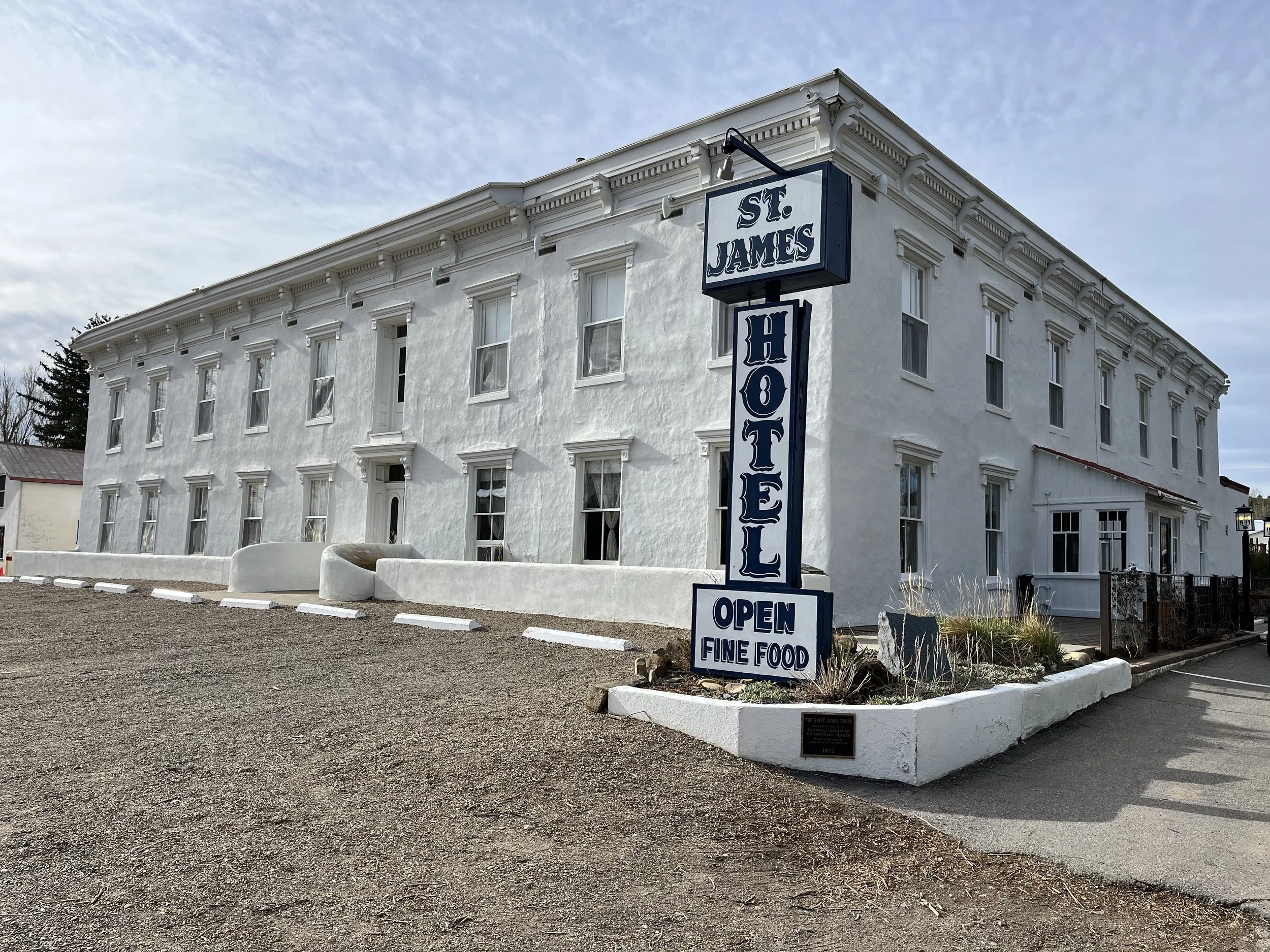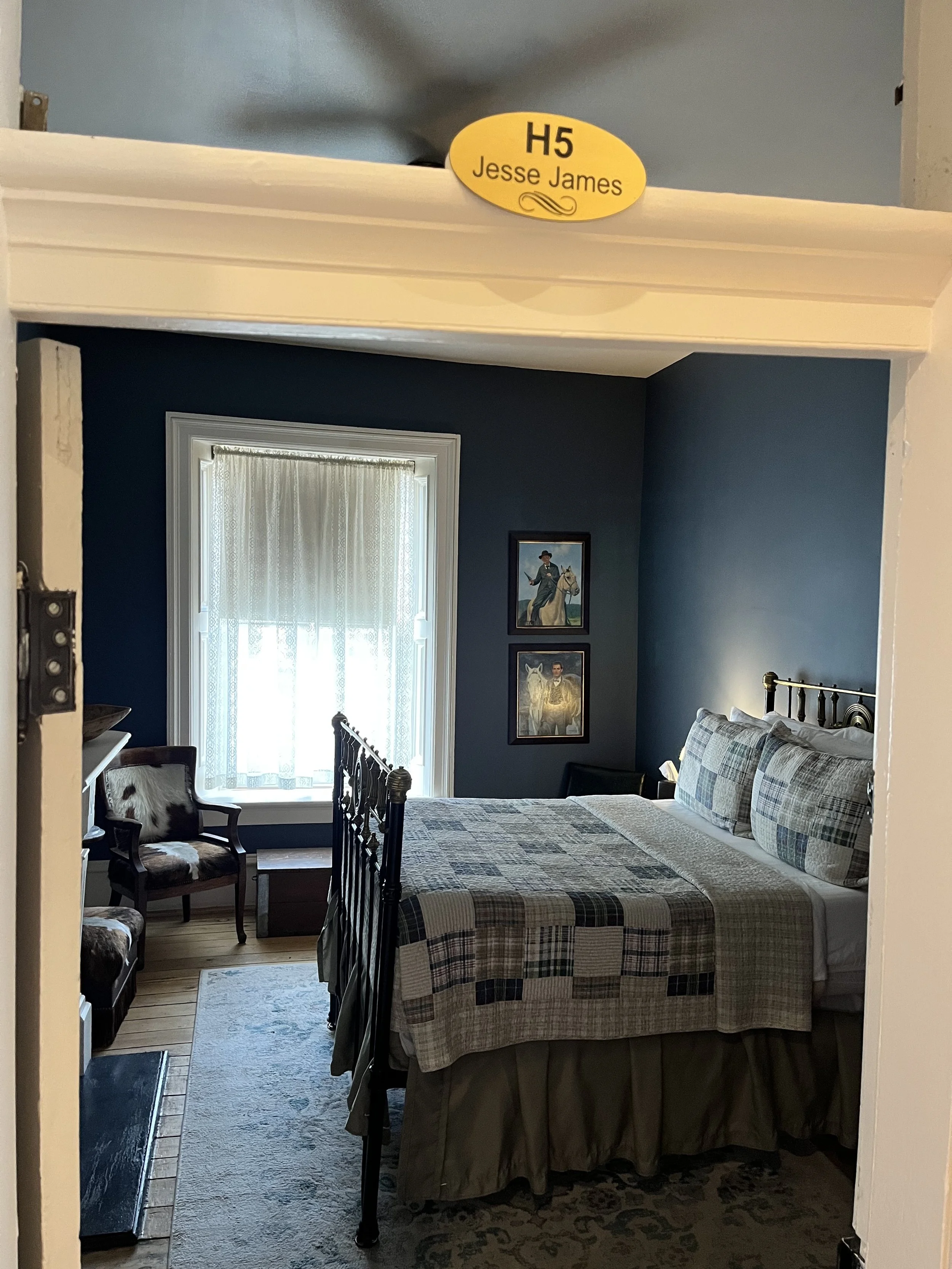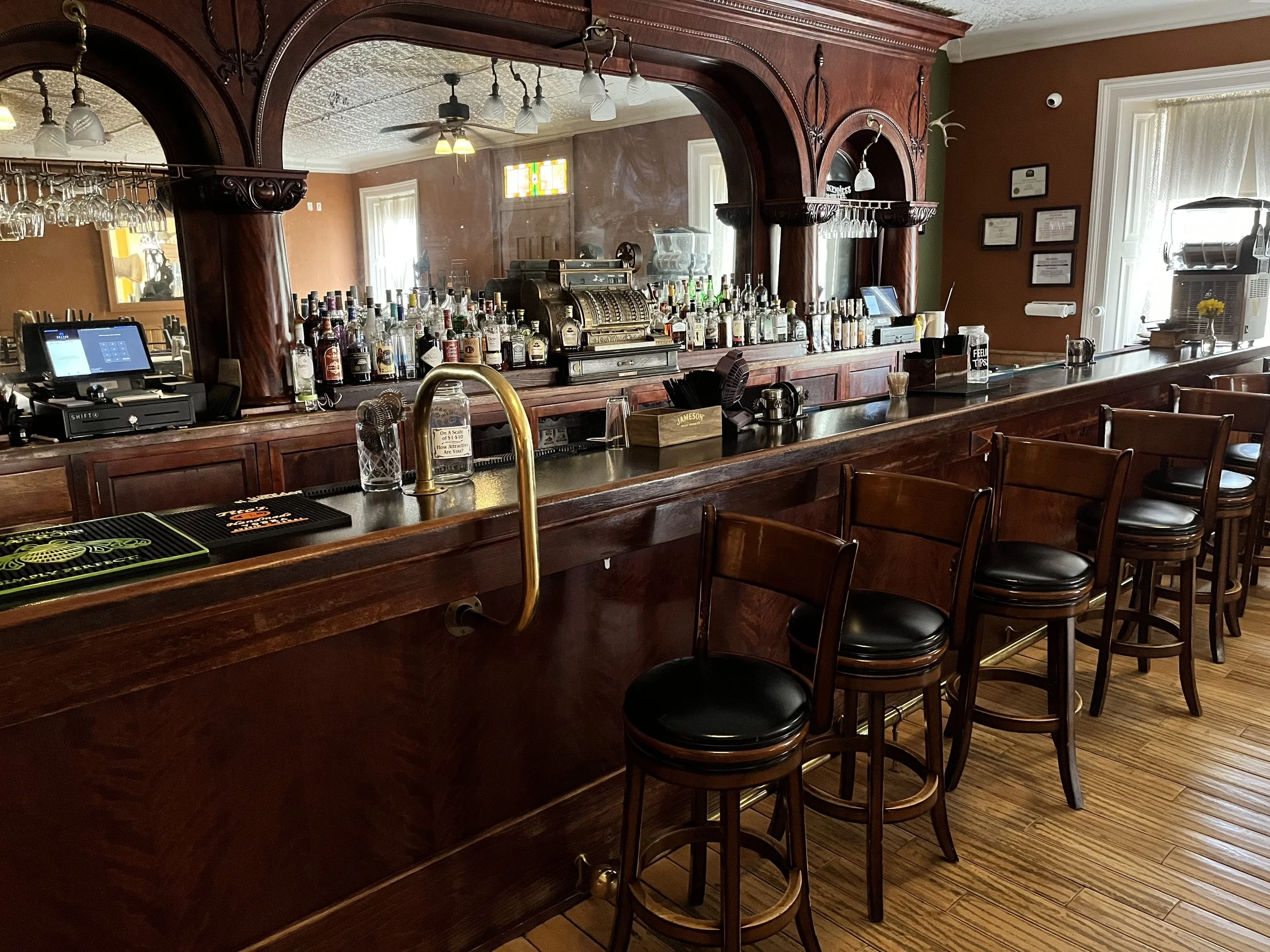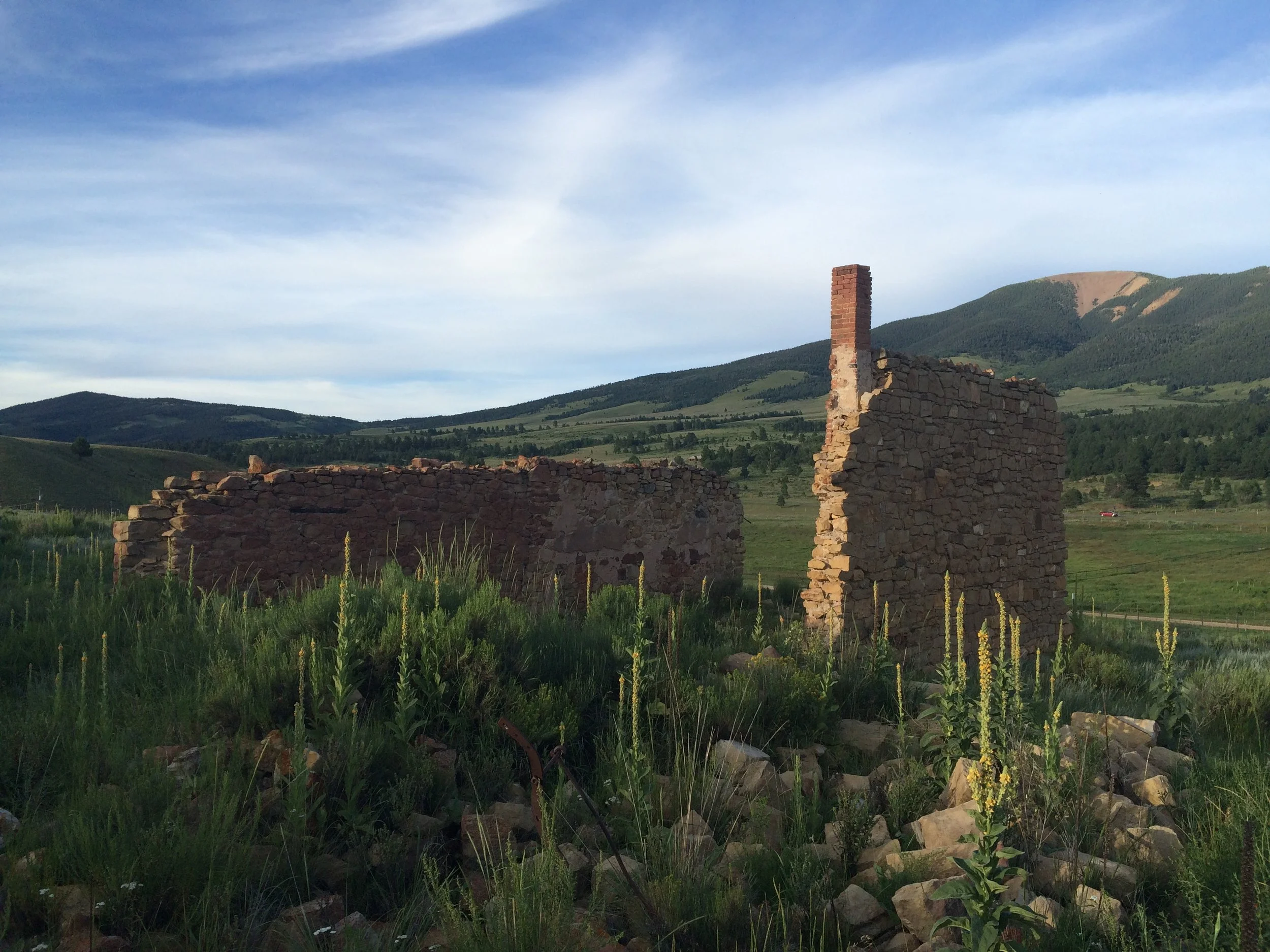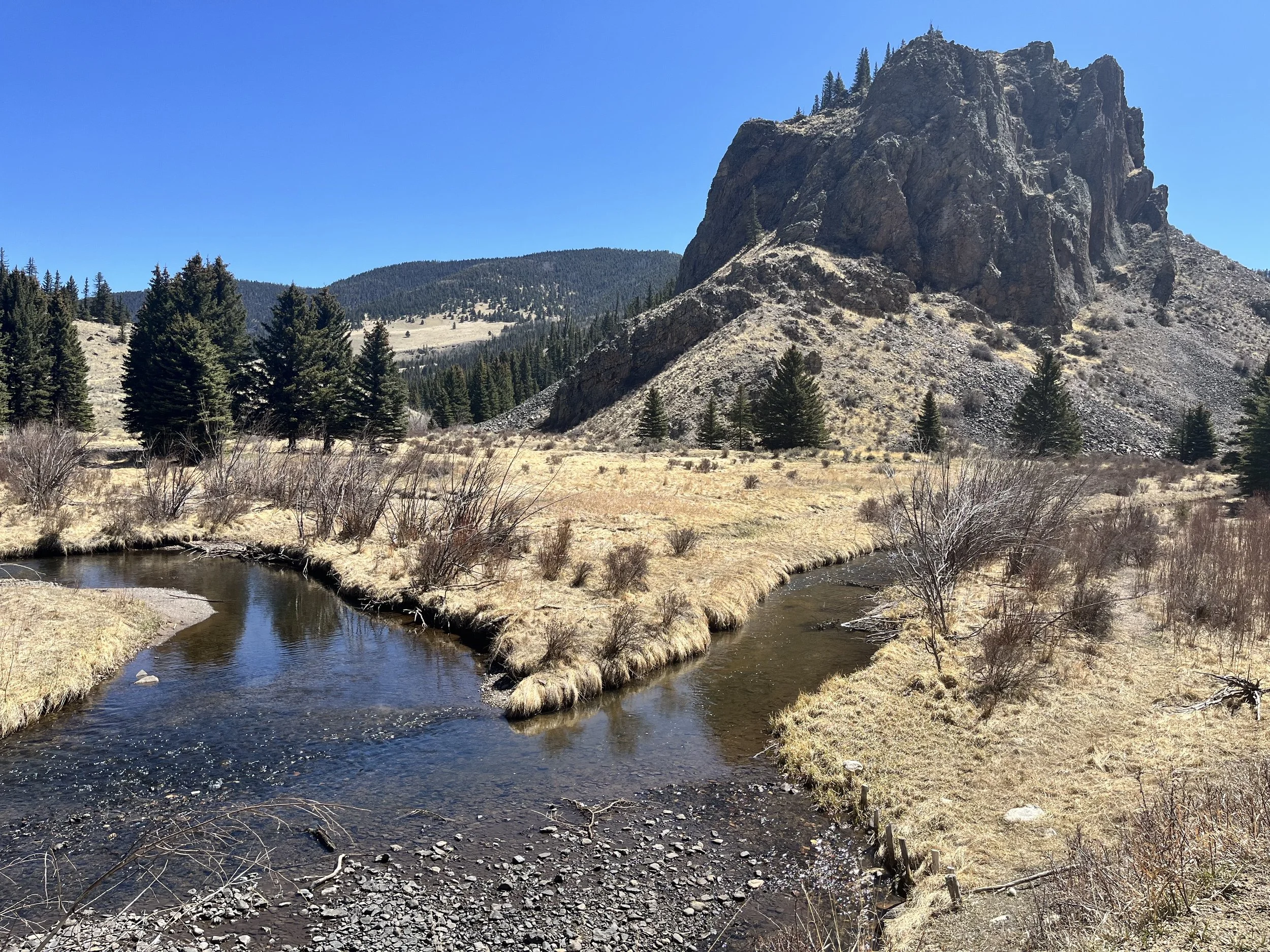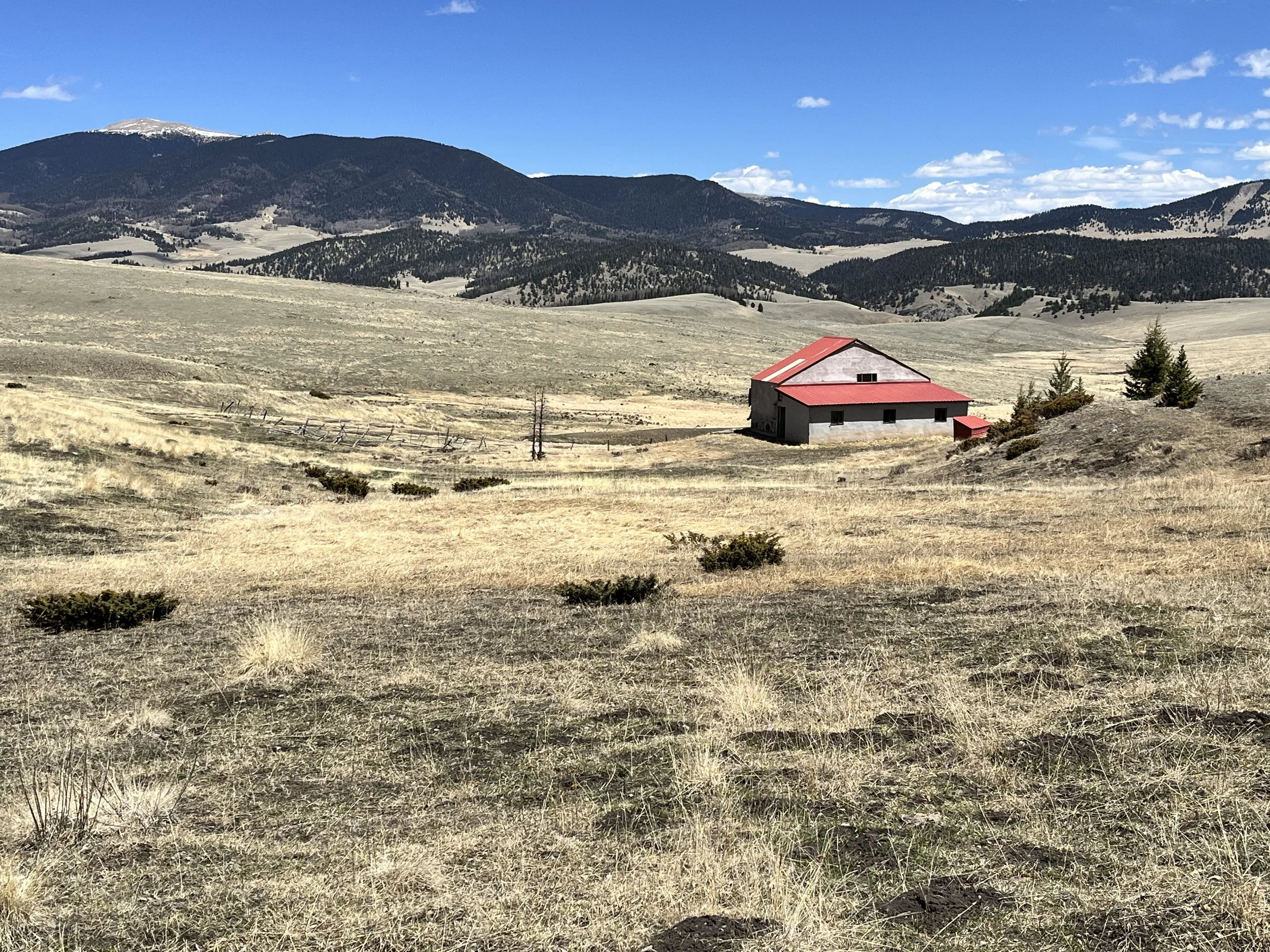New Mexico. Northern New Mexico’s Nineteen Century Boom Towns
I’m a fan of movie westerns including the Netflix series “Godless” that tells the story of a late 19th century boomtown called La Belle. When nearly all of the town’s men are killed in a mining accident, La Belle’s women step in to oversee ranches, run local businesses, and fight marauding outlaws. Although the story is fictional, there was a real mining town known as La Belle located in the mountainous Valle Vidal region of northern New Mexico. Finding the former townsite on a map, a friend and I set out to visit La Belle and a few other former mining towns in the area.
Our driving trek would take us to the town of Cimarron where we would spend the night. The next morning, we would drive west through Cimarron Canyon to the ruins of Elizabethtown and then northwest through Red River. From there we would drive north through Questa towards Costilla. Costilla is located on Highway 522, just a few kilometers south of the Colorado border. Turning east we would follow a paved road that would eventually transition to dirt. The last leg of our journey would involve a five-kilometer (roundtrip) hike to the ghost town of La Belle.
We arrived in Cimarron at the end of a long day of driving. Located in Colfax County near the eastern side of the Sangre de Cristo Mountains, Cimarron is a town of about 792 people. During the summer months it serves as a gateway to the 570 square kilometer Philmont Scout Ranch where I spent a summer working as a backcountry guide during my early 20s.
Our lodging for the night was at the historic St. James Hotel, built by Henry Lambert who once served as the personal chef of President Abraham Lincoln. The hotel opened in 1872 as the Lambert Inn (it was renamed the St. James in 1882). Cimarron is the Spanish word for “wild” and during the 1870s and 1880s, the town lived up to its name. A common question among residents was, “Who was killed at Lambert’s last night?” Guests of the hotel included Wyatt Earp and Jessie James. Registering under the name R.H. Howard, James always stayed in Room 14. Other guests included Buffalo Bill Cody, Clay Allison, Annie Oakley, and the outlaw Black Jack Ketchum. Davy Crockett, a descendent of one of the heroes of the Alamo in San Antonio, Texas, killed three buffalo soldiers of the U.S. Army’s 9th Calvary inside the hotel’s bar in 1876. Today, it’s still possible to see bullet holes in the bar’s ceiling.
We departed Cimarron for the 45-minute drive through Cimarron Canyon (and Philmont Scout Ranch) towards the ruins of Elizabethtown. At Eagle Nest we turned north on NM 38 and continued driving northwest through the Moreno Valley. Elizabethtown was established by Captain William H. Moore, the former military commander of Fort Union. In 1866 a gold rush began when Ute Indians brought what they described as “pretty rocks” to Captain Moore. Recognizing copper, Moore sent prospectors to check creeks and gullies where gold was discovered. Moore named the town after his daughter, Elizabeth Catherine Moore. A total of 17 claims were established around Baldy Mountain, visible to the east of Elizabethtown. As New Mexico’s first incorporated place, “E-town” grew rapidly between 1867 and 1869. At its peak the town had between six and nine thousand residents. In the spring of 1868, a stagecoach ran daily between Cimarron and Elizabethtown. E-town was not built on public land. The townsite like much of present-day Colfax County (New Mexico) and Las Animas County (Colorado) were within the sprawling 6,939 square kilometer Maxwell Land Grant owned by Lucien Maxwell. Unable to control the flood of gold seekers on his land, Maxwell charged usage fees and demanded a cut in profits from each mining claim. Among Elizabethtown residents was the outlaw “Coal Oil Jimmy” Buckley who led a series of stagecoach robberies in the early 1870s. Elizabethtown’s popularity was short-lived and by 1872 its population had dwindled to just 100. Some of its building materials were repurposed when the nearby town of Eagle Nest was founded in 1918. In 1931 Elizabethtown’s post office closed and today, the former mining town has a scattering of small homes, many informal and built from available materials. Aside from stone walls of the old Muntz Hotel there is little physical evidence remaining of late 1880s structures. Before departing we visited the town’s cemetery and walked among family burial plots.
Our final stop was La Belle. Although located only 13 kilometers northeast, there are no roads or trails through the rugged Sangre de Cristo Mountains that connect Red River with the La Belle townsite. East of Costilla we passed through former hunting grounds of roaming Ute and Jicarilla. The first mineral discoveries near La Belle were made in the summer of 1866 and soon dozens of claims were filed with names such as the Wonder, the Colorado, the Gold Bug, the Mollie, the Queen of the Valley, and the Tom Thumb. Established in 1894, La Belle was named for Belle Dixon, the wife of a prospector. Within less than a year the town had more than 70 buildings including a hotel, restaurant, mercantile, butcher shop, and three saloons. In December 1894, the first edition of a newspaper called the La Belle Cresset was published. With the rapid influx of prospectors and miners, S.B. Jellison moved his store from Amizett to La Belle and Tim Miller established a sawmill there. Carpenters couldn’t keep up with the demand for houses and commercial buildings. The Aztec Mining and Milling Company began operations there in the mid-1890s, drilling a 30.5-meter shaft. At its peak La Belle had three hotels including the Southern. Built at the cost of $30,000 (about US$1.1 million today), the Southern Hotel had four stories and 80 rooms. Prostitution flourished in the town’s redlight district that featured cabins and private rooms attached to saloons. A social club was organized that sponsored debates and other events including a dance at the Nadock Hotel attended by members of Black Jack Ketchem’s outlaw gang posing as cowboys. Town officials sponsored boxing matches, horse races, and baseball games. Transportation in and out of town was provided by the Catskill and La Belle Stage Line. Unfortunately for its residents, La Belle’s mines were never profitable with nearly all of the ore being of low grade. In 1897 the town’s population had dropped to just 500 and by 1910 only ten miners where still living there. Parking our car near Bull Hill, we crossed Comanche Creek on foot and then followed a seldom used jeep road in the direction of the former townsite. Cresting a hill, the red metal roof of the now abandoned La Belle Lodge became visible near a pond and small dam. Built in the 1950s, we found the lodge in poor condition. A ladder led upstairs to a loft filled with a few dilapidated bedframes and trash. Walking up a slope covered by what appeared to be mine tailings, I tried to imagine wooden buildings flanking narrow, dirt streets. A few meters from the lodge I removed a pottery shard from a hillside that was stamped with a coat of arms featuring the words “Ironstone China.”

